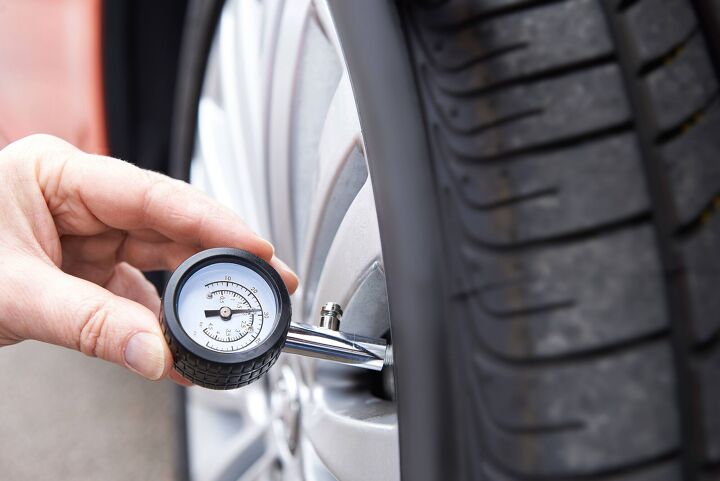Why Driving on Under-Inflated Tires is Bad

Making the mistake of driving on under-inflated tires can prove to be more costly than you think.
According to U.S. Department of Energy, ensuring your tires are always properly inflated can improve gas mileage by up to 3 percent and under-inflated tires can lower gas mileage by about 0.2 percent for every 1 psi drop in the average pressure of all tires. So, not only is driving with under-inflated tires unhealthy for your vehicle, you will also quickly be burning a hole in your wallet due to avoidable increased fuel costs.
Kal Tire held a driving event in Toronto, Canada, to demonstrate the negative effects of driving on under-inflated tires and we were invited to drive through a 30-minute course meant to simulate everyday driving. The goal was to complete three runs each with two identical crossovers but one with properly inflated tires and the other with around 80 percent psi. Average speed around the driving course was kept at a predictable 30 mph, the average speed at which most drivers drive in the city and complete major driving maneuvers.
After the planned number of acceleration runs with us in the driver’s seat guided by a Jeff McKague, a professional driver, we came away with a few findings.
Between both vehicles, there was no noticeable difference in ride quality through the straights, but as we tackled a few corners, the story quickly changed. The vehicle with under-inflated tires quickly lost a lot of grip during simple evasive driving maneuvers. The vehicle with properly inflated tires had more consistency in its handling with mostly positive and predictable changes in body motion.
ALSO SEE: How Long Do Tires Last on Average?
According to McKague, a huge percentage of drivers can easily fall into the trap of consistently driving on under-inflated tires if their driving routes don’t require the use of any evasive driving maneuvers and they don’t notice any jarring changes in a vehicle’s driving behavior. Most people simply don’t notice when their tire pressure is low. But it can become dangerous when a driver unexpectedly has to deal with driving in poor weather or slick roads and the vehicle is unable to sufficiently stay in control. A collision may occur and even worse, a serious injury.
The costs of under-inflated tires are just not felt in the driving experience but also on the tires themselves. During a break from our driving course, we were shown a sample used tire that had been driven for about 3,000 miles with noticeable sidewall scarring. That scarring was as a result of that tire being driven under-inflated for most of those miles. Even more alarming, when that tire was dismounted from the wheel, visible damage was noticed in the internal structure represented by flaked off rubber particles that had slowly began to accumulate within the insides of the tire.
“Even if your tires look fine during a quick visual inspection, they could still be under inflated by as much as 20 percent and the constant flexing of that tire can significantly increase a tire blow out,” said Vibhor Sharma, zone manager for Kal Tire Toronto. He also adds that maintaining tire pressure could save you almost two weeks of fuel every year.
ALSO SEE: How to Get the Most Out of Your Tires
Kal Tire recommends following this easy five-step guide to maintaining tire pressure:
Find the recommended PSI: Find your vehicle manufacturer’s recommended tire pressure on a sticker on the driver’s side door jam or in your owner’s manual. Something to note: Never use the max PSI listed on the sidewall of your tire. That is the maximum pressure rating for the tire, not the recommended pressure.
Check at the right time: Check your tire pressure when tires are cold – in the morning or a few hours after driving for the most accurate reading.
Use a reliable pressure gauge: Whether you choose a stick, dial, or digital tire pressure gauge, make sure it’s accurate (tire gauges are sensitive to being dropped). After removing the valve cap on the tire, press the tire gauge onto the valve (ensuring you are not using the end that releases air). Now, wait for the pressure reading. For stick gauges, wait until the white plastic stick stops moving; on a dial gauge, wait for the needle to stop.
Inflate as needed: Add just enough air to reach the recommended tire pressure. If you add too much, just push on the metal stem in the centre of the valve to release air.
Remember your spare: After you check and inflate all four of your tires, do the same for your spare to ensure it’s ready to perform in the event of a flat tire.

Chidi loves talking about cars. He enjoys exploring the limits of new car technology and performance vehicles. When he is not writing features for AutoGuide, you will most likely find him perusing Kijiji or Autotrader listings for unique classic nameplates.
More by Chidi Ohiaeri

































Comments
Join the conversation